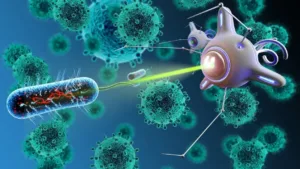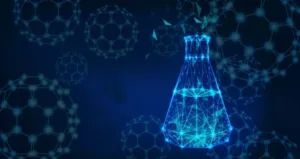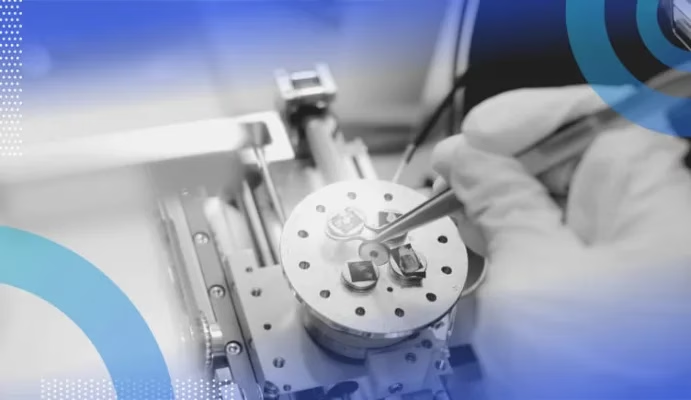The Tiny World of Nanotechnology
Imagine a world where we can manipulate matter at the smallest possible scale, rearranging atoms and molecules to create materials and devices with extraordinary properties. This is the fascinating realm of nanotechnology, a cutting-edge field that promises to revolutionize virtually every aspect of our lives, from medicine and electronics to energy and environmental solutions.
At its core, nanotechnology is the study and manipulation of matter at the nanoscale, which is incredibly tiny – a single nanometer is just one-billionth of a meter, or roughly the width of three atoms side by side. To put that into perspective, a strand of human hair is about 80,000 nanometers wide. By working at this minuscule level, scientists and engineers can design and construct materials and devices with fundamentally new and improved properties, far surpassing the capabilities of their conventional counterparts.
The Interdisciplinary Nature of Nanotechnology
One of the most exciting aspects of nanotechnology is its inherentlyly interdisciplinary nature. It draws upon principles and techniques from various fields, including physics, chemistry, biology, engineering, and computer science, creating a truly collaborative and innovative environment. This convergence of disciplines has led to groundbreaking discoveries and developments that have the potential to address some of the world’s most pressing challenges.
Nanotechnology in Medicine: Revolutionizing Healthcare
In the realm of medicine, nanotechnology is poised to transform diagnostics, drug delivery, and regenerative therapies. Imagine tiny nanorobots that can navigate the human body, detecting and treating diseases at the cellular level, or nanoparticles capable of precisely targeting and delivering drugs to specific cells, minimizing side effects, and maximizing efficacy.

These cutting-edge applications could revolutionize cancer treatment, regenerative medicine, and countless other areas of healthcare.
Electronics and Computing: Pushing the Boundaries
Nanotechnology also holds immense promise in electronics and computing. By manipulating matter at the atomic scale, researchers can create ultra-small, ultra-fast, and energy-efficient electronic components and devices. This could lead to the development of quantum computers, which harness the principles of quantum mechanics to perform calculations exponentially faster than classical computers, unlocking new frontiers in fields such as cryptography, scientific simulations, and artificial intelligence.
Energy and Environmental Solutions
Energy and environmental applications are another area where nanotechnology shines. Researchers are exploring the use of nanostructured materials for more efficient solar cells, advanced batteries, and catalysts for clean energy production. Additionally, nanotechnology-based solutions could help address environmental challenges such as water purification, air pollution, and waste management, paving the way for a more sustainable future.
Ethical and Safety Considerations
However, as with any emerging technology, nanotechnology also raises ethical and safety concerns. There are questions about the potential risks associated with the manipulation of matter at such a small scale, as well as the potential for unintended consequences on human health and the environment. Responsible development and implementation of nanotechnology requires a thoughtful and proactive approach, guided by rigorous scientific research, robust regulatory frameworks, and ongoing public discourse.
READ ALSO
CyberSecurity: Our Digital Frontier
Quantum Computing: Unlocking the Mysteries
Frequently Asked Questions:
1. What is nanotechnology, and why is it important?
Nanotechnology is the study and manipulation of matter at the atomic and molecular scale, typically between 1 and 100 nanometers. It is important because it allows for the creation of materials and devices with unique properties and enhanced capabilities, with potential applications in fields such as medicine, electronics, energy, and environmental science.
2. How does nanotechnology differ from traditional engineering and manufacturing?
Traditional engineering and manufacturing operate at a larger scale, typically dealing with materials and structures on a macro or micro level. Nanotechnology, on the other hand, involves manipulating matter at the atomic and molecular level, allowing for the precise control and engineering of materials and devices with fundamentally new properties.

3. What are some potential applications of nanotechnology in medicine?
Nanotechnology has numerous potential applications in medicine, including targeted drug delivery, early disease detection, regenerative therapies, and the development of biocompatible materials for implants and prosthetics. Nanoparticles and nanorobots could revolutionize the diagnosis and treatment of diseases like cancer, offering more precise and effective therapies.
4. How can nanotechnology contribute to environmental sustainability?
Nanotechnology can contribute to environmental sustainability in several ways, such as developing more efficient energy storage and conversion systems, creating advanced water purification and desalination technologies, and developing nanomaterials for sustainable construction and manufacturing processes. Additionally, nanotechnology-based solutions could aid in waste management and pollution remediation.
5. What are some potential risks and ethical concerns associated with nanotechnology?
Potential risks and ethical concerns associated with nanotechnology include the unknown effects of nanomaterials on human health and the environment, the potential for unintended consequences due to the complexity of manipulating matter at the atomic scale, and the ethical implications of emerging technologies like nanorobotics and human enhancement. Responsible development and implementation of nanotechnology requires careful consideration of these issues.
6. What is the role of nanotechnology in electronics and computing?
Nanotechnology plays a crucial role in advancing electronics and computing by enabling the development of smaller, faster, and more efficient components. For example, nanoscale transistors and memory devices are essential for the continued miniaturization of electronic circuits, leading to more powerful and compact computers, smartphones, and other electronic devices. Additionally, nanotechnology is fundamental in developing new materials like graphene, which has exceptional electrical conductivity and mechanical strength.
7. How is nanotechnology being used in the field of energy?
Nanotechnology is revolutionizing the energy sector in various ways, such as:
– Solar Cells: Nanomaterials like quantum dots and perovskites can improve the efficiency and reduce the cost of solar cells.
– Fuel Cells: Nanocatalysts can enhance the performance and reduce the cost of fuel cells, which are used to generate clean energy from hydrogen.
– Energy Storage: Nanotechnology is used to develop advanced batteries and supercapacitors with higher energy densities and faster charging times.
8. What advancements in materials science have been driven by nanotechnology?
Nanotechnology has led to the creation of materials with extraordinary properties, such as:
– Carbon Nanotubes and Graphene: These materials have exceptional strength, electrical conductivity, and thermal properties, making them ideal for a wide range of applications from structural materials to electronic devices.
– Nanocomposites: By incorporating nanoparticles into bulk materials, nanocomposites can achieve enhanced mechanical, thermal, and electrical properties.
9. How does nanotechnology impact the environment during production and disposal?
The environmental impact of nanotechnology during production and disposal is a topic of ongoing research. Potential concerns include the release of nanoparticles into the environment, which could affect ecosystems and human health. Ensuring the safe and sustainable development of nanotechnology involves assessing the life cycle of nanomaterials, from production to disposal, and developing guidelines to mitigate any negative impacts.
10. What regulatory challenges exist for nanotechnology?
Regulating it presents several challenges due to its novel properties and potential risks. Key challenges include:
– Safety Assessment: Developing standardized methods to assess the safety of nanomaterials for human health and the environment.
– Classification and Labeling: Creating clear definitions and classifications for nanomaterials to ensure proper labeling and consumer awareness.
– International Cooperation: Harmonizing regulations across countries to facilitate the safe and responsible development and commercialization of nanotechnology products.
References:
– National Nanotechnology Initiative (https://www.nano.gov/)
– Nature Nanotechnology (https://www.nature.com/nnano/)
– Nanotechnology Reviews (https://www.tandfonline.com/toc/tnan20/current)
– Nanotechnology and the Environment (https://www.epa.gov/nanotechnology)
– Ethical and Societal Implications of Nanotechnology (https://www.nist.gov/topics/nanotechnology/ethical-societal-implications-nanotechnology)

